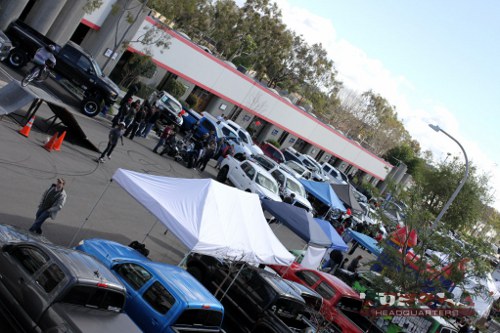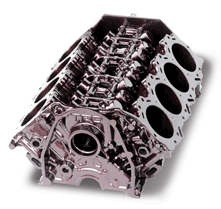Driving Isn’t In Our Collective Automotive Future
The tendency in automotive media (of which I consider myself a peripheral member) is to focus on the positives and negatives of the cars that are available in the hear and now. Which truck has a more realistic tow rating? Which car is a better value? Which auto executive is smarter than the rest? Etc.
One topic that doesn’t seem to get enough attention in the automotive press is the idea that, in the near future, driving is going to be incredibly easy. In fact, drivers themselves may be mostly unnecessary in a generation (maybe sooner).
Stick with me and think about how driving has changed in just the last twelve years:
- No more manual transmission options on most vehicles – driving complexity is greatly reduced
- Many vehicles offer proximity sensors to help with parking, and some cars even park themselves
- ABS and traction control are found on almost all new cars – correcting for inclement weather is easier than ever
- Stability control and roll-over sensors prevent accidents before they ever happen. Poor judgment on behalf of the driver is corrected now more than ever.
- It’s now possible to buy a car that will warn you when you’re following too closely and automatically apply the brakes if you aren’t paying attention.
- Safety systems have become so effective that NHTSA had to re-calibrate their “5 star” ratings
While many will argue that these enhancements aren’t really enhancements, there’s no denying that driving is less complex and therefore easier today than it was a short while ago.
The amazing thing is that these enhancements are just the tip of the iceberg. Read more…
2nd Annual Tundrastop Meet Truck Show Coverage
Just this past Saturday, TundraStop.com – in collaboration with DubzDirect.com, Toyo Tires, and Fuel Off-Road Wheels – hosted their second annual meet and truck show in Brea, California. The show included too many 2nd generation Tundras to count, some very nice 1st gen Tundras, some dedicated off-road trucks, and even a couple of very nice Toyota Tacomas.

2nd Annual Tundrastop.com Meet 2011
We sent freelance photographer extraordinaire Shannon West to try and capture the event, here’s what she found: Read more…
Best Toyota Tundra Burn Out Videos
Once the Toyota Tundra gained a 5.7-liter V8 engine with nearly 400 horsepower on tap, it didn’t take a crystal ball to predict that pretty soon YouTube would be filling up with tire-melting shenanigans caught on amateur video. Burnouts are fun – especially if it’s not your tires going up in smoke – and the Tundra has more than its fair share of cool brakestands and donuts preserved for the ages by camcorders across the country.
Let’s take a look at some of the best Tundra burnout videos available on YouTube. Read more…
Ford Weaseling Out Of Full F-150 Airbag Recall
A little more than a year ago I noted that Ford F150’s had a mysterious exploding airbag problem, reporting that NHTSA was investigating F150 airbag complaints. In that article I predicted that Ford would likely need to recall some trucks, as their own internal documents indicated airbags were spontaneously exploding due to an electrical short. From Jan, 2010:
In light of Toyota’s recent recall problems, Ford would be wise to get ahead of this thing as quickly as possible…The F150 is Ford’s most popular vehicle, and they can ill-afford to have consumers question the truck’s safety… Hopefully, Ford will manage this issue better than Toyota
Today Ford announced that they would be recalling F-150s to fix this problem, but reportedly Ford will only recall 150,000 trucks rather than the approximate 1.5 million that NHTSA has requested. Ford argues that the only trucks effected by this airbag problem were built at the Norfolk, VA plant, yet NHTSA investigators have found evidence of spontaneously exploding airbags on F150s made at other plants (link).
In March of 2010, Toyota came under heavy fire when records showed that Toyota executives attempted to “negotiate” their way out of a NHTSA floormat recall to save money. Today, Ford seems to be doing something similar: Rather than replacing airbag assemblies on 1.5 million trucks as suggested by NHTSA, Ford is only going to replace 10% of the assemblies.
Evidently, 90% of 2004-2006 F150 owners who may be driving around with a spontaneously exploding airbag aren’t important to Ford. Read more…
CGI Engine Blocks and Half-Ton Diesels – What, How, and Why
Sometimes some of the most innovative design ideas rely on concepts that are actually very, very old. History is littered with theories, materials and feats of engineering that were patented long before their time, intriguing developments that simply were not capitalized on in their era for a variety of different reasons. One technology that falls under this general heading is compacted graphite iron.
Compacted graphite iron (CGI) was developed more than 60 years ago as a high strength alternative to standard gray iron. In fact, CGI is 75 percent stronger and stiffer than traditional gray iron, and it also offers better resistance to fatigue than both aluminum and gray iron. This strong and lightweight material was used only sparingly over the decades following its discovery, with applications including high speed train brakes and commercial diesel truck engines.

CGI Engine Block
In a more modern setting, CGI has found its way into the factories that produce premium luxury cars, such as those run by BMW and Audi who use the metal in a number of different engine designs. Jaguar and Hyundai have also adopted the use of CGI in several high performance applications. In the motorsports world, NASCAR has heavily adopted CGI technology, with the majority of teams using this material for their engine blocks which see some of the harshest abuse that a motor can take. Even TRD has gotten into the act, using a CGI block for its Craftsman series racing truck engine.
For half-ton truck owners, the most intriguing possibilities offered by compacted graphite iron relate to its potential in the lightweight diesel field. Read more…

